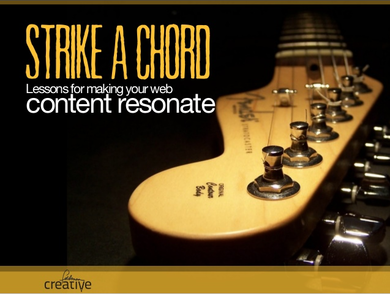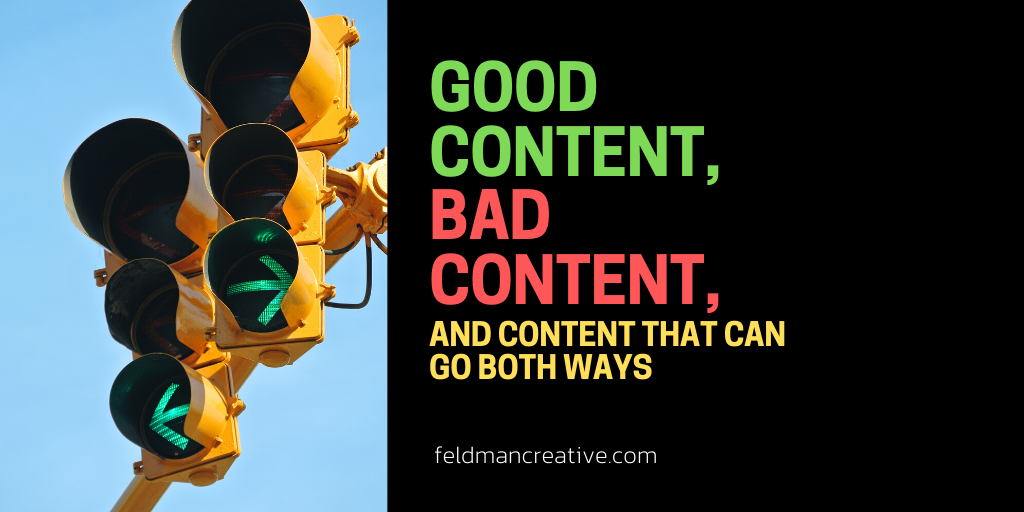“Gonna’ tell you a story that you won't believe, but I fell in love last Friday evenin' with a girl I saw on a barroom T.V. screen”
~ Jim Croce, “Roller Derby Queen”
I suspect you’ve heard this before: people seldom remember what you said, but will remember how you made them feel.
Enter the art of storytelling.
Stories carry emotional impact.
Whether you’re writing a blog post, giving a presentation, or delivering any sort of content in any forum, you want to strum on the heartstrings of your audience.
Stories get it done.
Many of the great songwriters manage to pull it off in just three or four minutes of narrative. Jim Croce was one of the greats, a master storyteller. Many of his biggest hits hit you in the heart with stories rich in characters: Operator, You Don’t Mess Around with Jim, Bad Bad Leroy Brown, Workin’ at the Carwash Blues.
I was playing Croce’s tunes and got lost in the funny story in “Roller Derby Queen.” After, as I often do, I got out my guitar and played my sad imitation of the original and it got me thinking how well Croce tees up the story and takes advantage of so many of the elements of storytelling in just one line, the opening line.
I say we examine his first line and toss around some of the ideas that serve as great storytelling tips.
“Gonna’ tell you a story that you won’t believe….”
Very nice. Croce increases anticipation immediately. He introduces a promise, a little foreshadowing, and fills us with a little sense of curiosity and suspense right from the get-go.
The best stories always have these elements. There’s an instant gap, a cliffhanger of sorts. A “little story…” Cool. We like stories. “…that you won’t believe..”
Great storytellers set ‘em up with intriguing prefaces like this.
“…but I fell in love last Friday evenin’…”
Here are some more elements of great storytelling.
First a theme: love—clearly one of the best of them all because it’s so universal. As a reader/viewer, when you gather the central theme of a story, you begin to make a decision about whether you’re going to stick around or not, based on your interests.
Say it’s clear the theme is crime, or sports, or travel—all popular themes. You have feelings for or against various themes. For instance, call me an unmanly man, but I steer clear of sci-fi, fantasy, and what I call “explosion” films and books. When it comes to fiction, I’m all about interesting characters and the trials they face. I know what I do and don’t like, as do you.
Themes clearly relate to what we do as bloggers. Generally you can count on the headline to put forth a theme. In these online marketing circles you and I traverse, you’ll find common themes like social media, content marketing, analytics, ecommerce, and so on. There are those you can’t resist, those you’ll tend to ignore and many more in between where the theme alone won’t do. The hook matters too.
“… last Friday evenin’…” Here’s another storytelling element: a time. Once again, we can take a cue from this nugget. In Croce’s song it probably could have easily been Saturday night, but nonetheless, the mention of Friday night adds another nice color.
Ask yourself: will the time be key to your story? If so, will you reveal it up front? Your story might reach way back in time. It might review the current year or decade. It might look forward. Stamping your story with a time and place is bound to serve it well.
Ah, and speaking of place, Croce goes on…
“…with a girl I saw on a barroom TV screen.”
Did I tell you this was a classic opening line?
Croce now lays on us two awesome elements: a character and place. Just a second earlier we learned we have ourselves a love story. Next we have our main characters: the story’s narrator and the girl. Perhaps that’s not an amazingly unique cast, but just a second later comes the twist, a conflict.
Great stories always have a conflict, right? Often it comes by way of a character, the villain. Sometimes the villain is a circumstance, as we have here. Croce’s fallen in love with a girl on TV. That could be a problem. And, of course, it only gets more interesting.
We’re soon to learn the object of his affection is a roller derby queen. Hook city!
And if there was ever a songwriter who could develop a character in the confines of three-minute ditty, it’s Jim Croce.
She was five foot six and two fifteen, a bleached-blonde mama with a streak of mean. She knew how to knuckle and she knew how to scuffle and fight. And the roller derby program said that she was built like a ‘fridgerator with a head. Her fans call her “Tuffy,” but all her buddies called her “Spike.”
Now that’s what you call painting a picture with words.
It’s time to tell your story.
The division between storytelling and marketing has dissolved. Stories play on people’s fears and emotions. With stories, brands connect with readers on a more human level.
I like how Shane Snow explains the power of storytelling in “This Will Be the #1 Business Skill of the Next 5 Years.”
As the majority of corporations start thinking of themselves as publishers, the defining characteristic among the successful ones will be the ability to not just spew content, but to craft compelling stories…
No one cares about your marketing goals. But everyone likes a good story. The businesses that can tell one will have increasing advantage.








